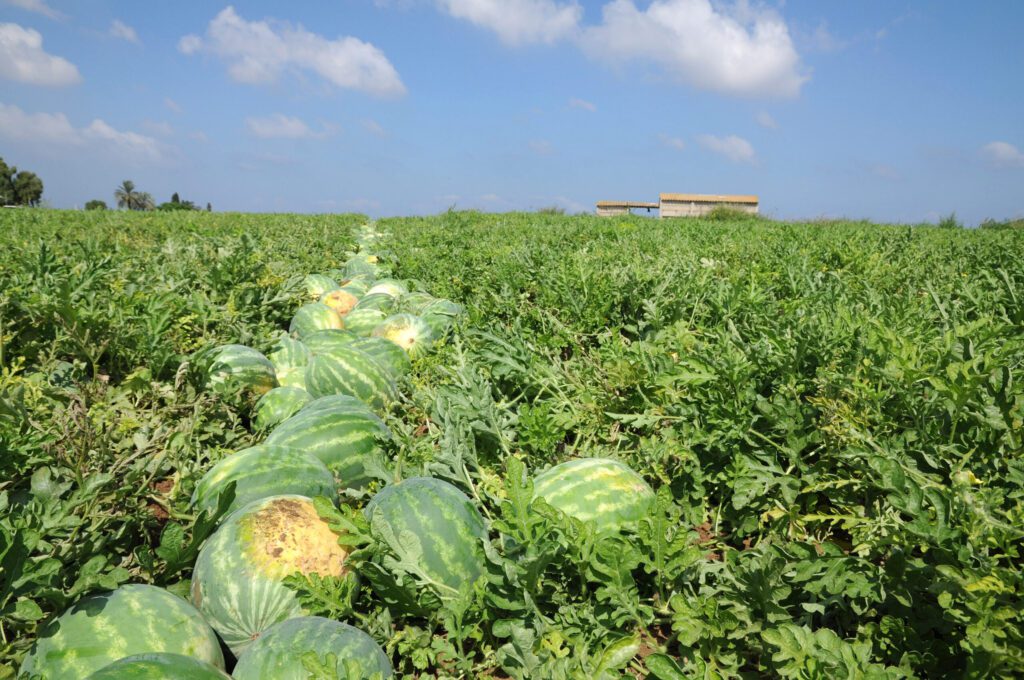Florida Watermelon Growers Fighting Inflation, Pests
by TERESA SCHIFFER
What would summer be without sweet, succulent watermelon for a cool treat on those sweltering afternoons? The refreshingly juicy member of the cucurbit family is 92 percent water but still manages to pack a healthy dose of vitamins A and C plus the phytonutrient antioxidant lycopene in every tantalizing bite.
It should come as little surprise to anyone that the Sunshine State is the nation’s top producer of these mouthwatering melons. Roughly a quarter of the total watermelons grown in the United States are right here in Florida. As of 2019, watermelon was the state’s third-ranking vegetable crop in terms of value, bringing in over $161 million that year.
In 2020, 958.65 million pounds of watermelon were harvested in Florida. There were 26,300 acres planted, and 25,200 acres harvested, with an average yield of 38,080 pounds per acre. The majority of watermelons grown in Florida are cultivated on farms that devote 5 acres or less to the popular fruit. As of 2017, there were just 431 Florida farms producing watermelon.
The farmers that grow watermelon generally made about 16 cents per pound in 2020. Depending on their yield per acre and the prevailing market price at the time, their net returns range from about $1,350 to $8,200 per acre.
Watermelons are harvested in Florida from about March 15 to the first of July. The season kicks off each year in Immokalee, located in Collier County in the southeastern part of the state. Shortly after, the southwestern counties follow suit with their watermelons hitting the market before the harvest moves on up through the central and northern parts of Florida.
Trey Miller is the current president of the Florida Watermelon Association. He’s been in the watermelon industry for 15 years and a member of the association for the past 10. The Florida Watermelon Association operates under the mission to support research, education, and the promotion of Florida’s watermelon industry.
“It’s been an okay season,” Miller says. “A lot of adverse weather effects. There have been some hail issues that we’ve had through South Florida and North Florida. There’s been a lot of rain, usually when we don’t need it, but that’s farming.”
Inflation is having a negative impact on farmers in Florida and throughout the country. As the price of materials has gone up, so has the price of produce on grocery shelves. Miller says about half of the inputs used by growers in the production of watermelons are made from petroleum products, such as the plastic growing beds and the plastic drip tape used for watering the watermelons. However, it’s difficult for growers to command the prices necessary to adequately cover the additional expenses incurred, and they end up making less money on their products.
Another problem facing growers is the increase in whitefly populations. These pests primarily feed on a particular weed that grows in the watermelon fields, so when these weeds are cut down and the bugs lose their main food source, they simply start feasting on the watermelon plants. In doing so, they transmit a virus that causes a disease called watermelon vine decline, or WVD. This disease can decimate a plant, destroying the vines and leaves and turning the interior of the melon into a pulpy mush.
There is no pesticide available yet to control whiteflies, so growers have resorted to tenting their crops, covering them with a breathable fabric for a portion of their growth in order to prevent the insects from causing their destruction. Allowing the plants to develop under this protective barrier gives them a chance to get big enough to withstand some whitefly damage and still produce a healthy melon.
The whiteflies have mainly been an issue in Immokalee so far, though they are spreading further north. South Florida has not experienced a hard freeze in quite some time, which would kill the weeds that the whiteflies feed on, thereby reducing the insect population naturally.
Despite these challenges, Florida’s watermelon harvests have been reliably robust in recent years.

